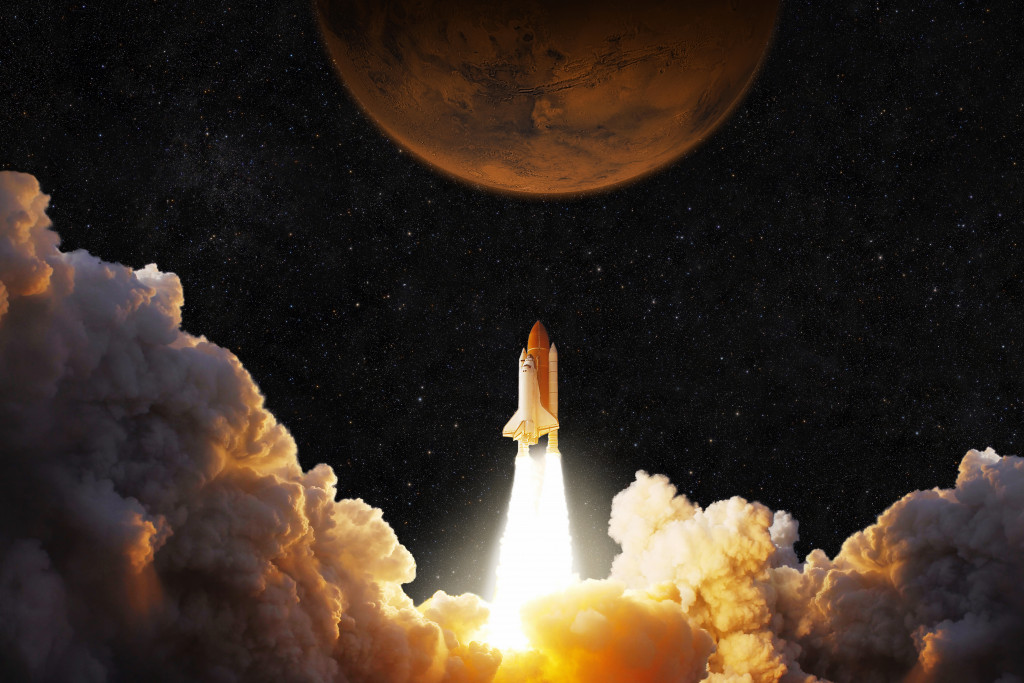SpaceX has one goal in mind: bring humans to Mars. The “mission to Mars” plan includes refueling while in earth’s orbit, transporting multiple passenger ships, and making the biggest rocket ever. Elon Musk, the CEO of SpaceX, plans to send over 1 million to Mars by 2050.
The SpaceX Reusable Rocket Launch System Program
SpaceX’s reusable launch system development program is privately funded, intending to develop new technology for a reusable orbital launch system, like the reusability of an aircraft. However, unlike the forex trading market, where anyone can make an Islamic foreign exchange brokerage account and buy and sell currencies with ease, investing in stocks for SpaceX isn’t possible.
Regardless, the aerospace company has been developing technologies over the years to facilitate the full and fast reusability of different spacecraft vehicles. The long-term goal of this program is to create a launch vehicle capable of returning to the second stage to the launch pad and the first stage to the launch site in a day. Overall, the company’s long-term goal is that these stages of the orbital launch vehicle should be available for reusing a few hours after return.
As of 2021, the aerospace company is actively developing its Starship system to make it “fully reusable” and replace its existing spacecraft vehicles.
So, Why Mars?

Mars is one of the closest planets to earth and is as far from the sun as the planet is, making it a perfectly liveable area that still receives decent sunlight. However, the red world is a bit colder than earth. Luckily, with technology, it should be easy for humans to adapt. Additionally, Mars’ atmosphere consists of CO2, nitrogen, and argon, making it possible to grow plants on Mars. But the most impressive part is that the days on Mars are remarkably closer to earth, making it even easier for humanity to adapt.
A Closer Look Into the Reusable Rockets
The famous reusable rockets SpaceX conducted to allow humanity to set foot out on Mars are called the Falcon 9. They are a reusable, two-stage rocket designed and created by the aerospace company to transport humanity beyond the earth’s orbit safely. Falcon 9 is the only functional, and orbital-class reusable rocket in existence, meaning its reusability enables SpaceX to refly the most costly parts of it, driving down the cost of space access — making it more accessible for more people.
However, as time passed, SpaceX got more creative and integrated Falcon 9 into their Starship, the world’s most robust space vehicle ever made, boasting the ability to carry over 100 metric tonnes to earth orbit. The Starship draws a comprehensive history of the vehicle and engine development programs, with the company quickly iterating its design with orbital-flight.
When combined, the Starship and the super-heavy rocket make a reusable space transportation system that can refuel itself while on orbit while leveraging the red planet’s natural H2O and CO2 resources, allowing the spacecraft to be refueled on the surface of Mars. Although Starship has a long way to go before it can transport cargo and humans to Mars, SpaceX hopes the pair will come together fast enough.
Overall, the company is considering launching the first-ever “uncrewed” test missions to the red planet in 2022.
What the Future Entails for SpaceX’s Mission to Mars
Regardless of the timeline of SpaceX’s Mars program, the company envisions that the Mars journeys would rely on fuel depots still stationed near earth’s orbit. Super heavy boosters would then launch individual Mars-bound Starship to the earth’s rotation, rendezvousing with other starships full of fuel. The ship would then head to Mars, where experts predict it’ll take at least six months to get to the red planet.
The company decided that if the first batches of Starship flights went smoothly, then a fully crewed Starship would follow, accompanied by freighters. While SpaceX is currently aiming to hold as many as 100 people per ship, earlier missions would likely carry smaller crews to leave room for cargo to set up camp on the red planet.
All these are only expert predictions of SpaceX’s mission to Mars, and the team at the aerospace company aims to surpass these goals — making life possible beyond earth.
SpaceX’s goal to put the very first humans on the famous red planet of Mars isn’t new. After all, the company was founded and established with the desire in mind. However, only in recent years have the aerospace company shown any real progress, publishing more successful tests and early versions of the spacecraft. It’s only going to progress more from now on — making the idea of staying long-term on Mars closer to reality.

